#Rubycon
Explore tagged Tumblr posts
Text
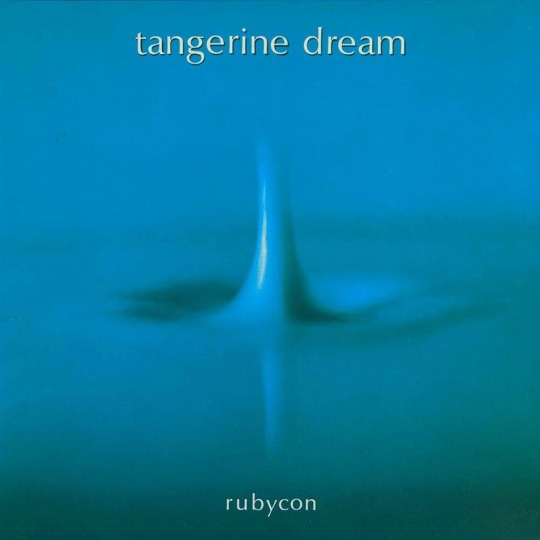
Tangerine Dream - Rubycon (1975)
29 notes
·
View notes
Photo
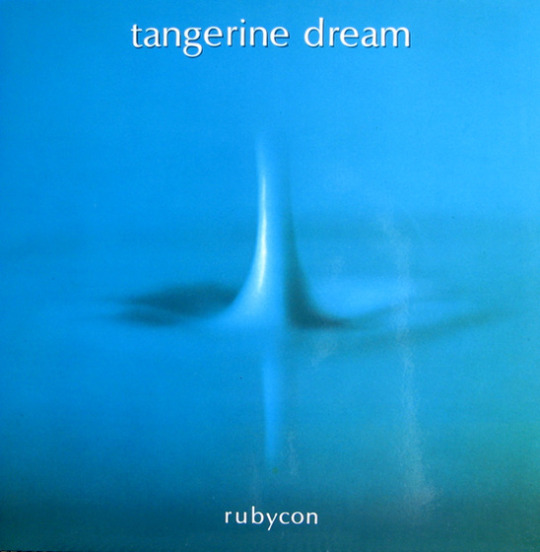
11:52 AM EST January 21, 2025:
Tangerine Dream - "Part One" From the album Rubycon (March 21, 1975)
Last song scrobbled from iTunes at Last.fm
--

<600x600>
1 note
·
View note
Text
https://www.futureelectronics.com/p/passives--capacitors--aluminum-electrolytic-capacitors/eee-fk1j471am-panasonic-9068903
Aluminum oxide, electrolytic capacitors, Audio capacitors, Rubycon capacitors
mm 105°C Aluminum Electrolytic Capacitor
#Capacitors#Aluminum Electrolytic Capacitors#EEE-FK1J471AM#Panasonic#aluminum oxide#Audio capacitors#Rubycon#low frequency signals#Reforming#multi section capacitor#Axial#miniature Nichicon aluminum electrolytic capacitor
1 note
·
View note
Text
https://www.futureelectronics.com/p/passives--capacitors--aluminum-electrolytic-capacitors/eee-fk1j101p-panasonic-3028632
Low frequency signals, multi section, Nichicon aluminum electrolytic capacitor
EEE-FK Series 63 V 100 uF Ø 10 x 10.2 mm 105 °C Low ESR SMT Electrolytic
#Capacitors#Aluminum Electrolytic Capacitors#EEE-FK1J101P#Panasonic#Low frequency signals#multi section#Nichicon#Rubycon audio#Axial#Audio capacitor#Rubycon capacitors#Low ESR SMT Electrolytic#computer grade#Reforming
1 note
·
View note
Text
https://www.futureelectronics.com/p/passives--capacitors--aluminum-electrolytic-capacitors/eee-1va470wp-panasonic-2028610
Audio capacitor, Axial electrolytic capacitor, Low frequency signal
EEE-S Series 35 V 47 uF Ø 6.3 x 5.4 mm 85 °C SMT V-Chip Aluminum Electrolytic
#Panasonic#EEE-1VA470WP#Capacitors#Aluminum Electrolytic Capacitors#Multi section#Nichicon aluminum#Rubycon capacitors#Audio capacitor#Axial#Low frequency signal#computer grade#low esr#Aluminum oxide#SMT V-Chip
1 note
·
View note
Audio
4:51 PM EDT October 23, 2023:
Tangerine Dream - “Part Two” From the album Rubycon (March 21, 1975)
Last song scrobbled from iTunes at Last.fm
–

0 notes
Text
https://www.futureelectronics.com/p/passives--capacitors--aluminum-electrolytic-capacitors/eee-fk1h151p-panasonic-3028618
Axial electrolytic capacitor, Rubycon capacitors, low frequency signal, low esr
EEE-FK Series 50 V 150 uF Ø 10 x 10.2 mm 105 °C Low ESR SMT Electrolytic
#Capacitors#Aluminum Electrolytic Capacitors#EEE-FK1H151P#Panasonic#Axial electrolytic capacitor#Rubycon capacitors#low frequency signal#low esr#Audio capacitor#Miniature multi section capacitor#Low ESR SMT Electrolytic#computer grade#aluminum oxide
1 note
·
View note
Text
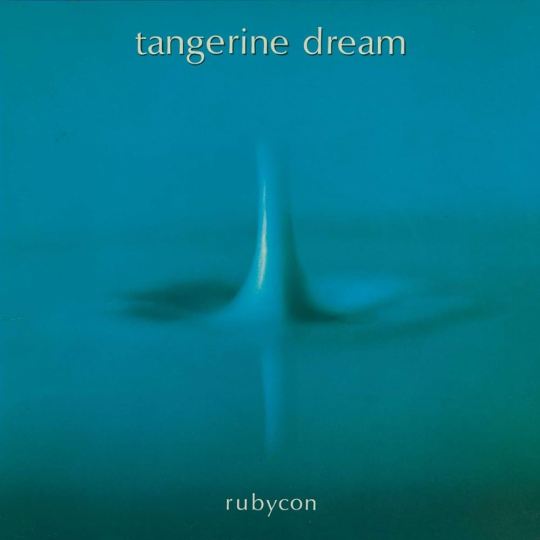
Tangerine Dream - Rubycon (1975)
25 notes
·
View notes
Text
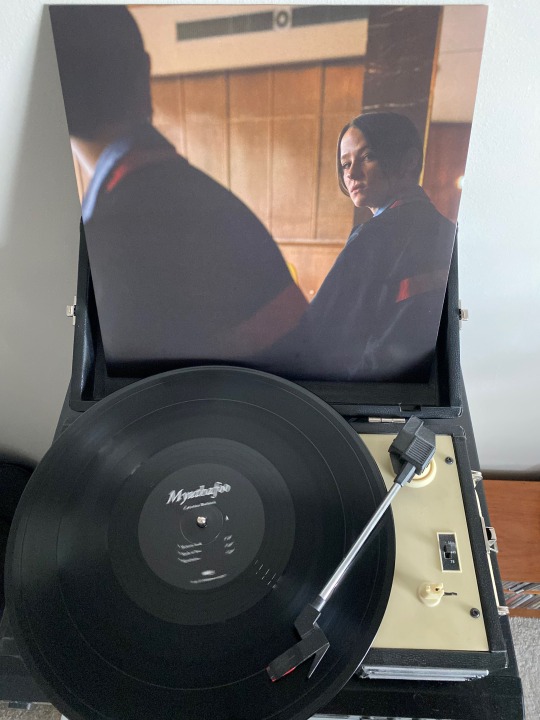
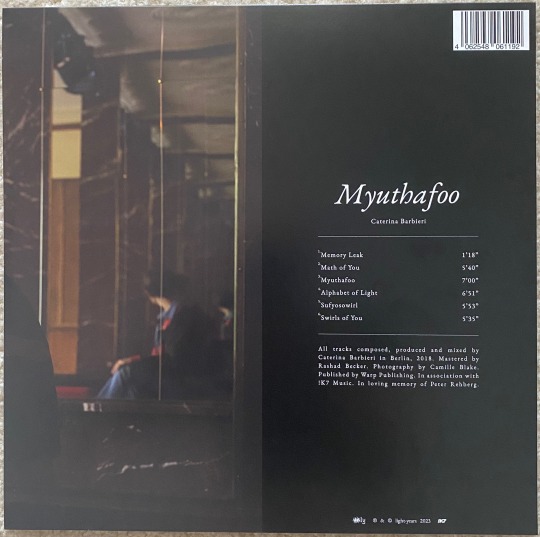

Caterina Barbieri: Myuthafoo (2023)
Maybe once or twice a year, I'll walk into a record store and walk back out holding a record that the clerks were spinning that day -- Caterina Barbieri's Myuthafoo was one such album.
Even its track-sequence seemed tailor-made to seduce a discerning (translation: intolerably hypercritical) music consumer like myself, with the slashing, chaotic, keyboard thrashing of "Memory Leak," prefacing a clutch of meticulously organized songs.
But let's back up for a moment ...
Caterina Barbieri is an Italian electronic music composer and musician, whose avant-garde creations of the past decade have leaned primarily on modular synthesizers like the Buchla 200, Orthogonal ER-101, and the ubiquitous Moog.
As a result, her music is both futuristic and anachronistic, recalling pioneering 1970s works by the likes of Kraftwerk, Brian Eno, Tangerine Dream, and in the case of the aforementioned "Memory Leak," the spine-tingling terror of a Klaus Schulze!
The oddly named Myuthafoo (no idea what it means ... anyone?) was compiled from the same 2018 sessions in Berlin that spawned Barbieri's '19 breakthrough, Ecstatic Computation, and two more albums ('20's Fantas Variation, and '21's Spirit Exit) have followed in due course.
Also, a global pandemic!!!
But this LP is no bastard offspring, but a positively stunning, fully-realized achievement in its own right; one where cascading tone sequences are sent through ricocheting delays, gradually evolving into an irresistible sonic geometry, both unexpected and eerily logical.
To hear it from the artist herself, this music "is rooted in the limitations of a small number of options that branch out into a much larger structure, eventually reaching towards an open-ended cosmos of possibility."
Two of the ensuing tracks: the pogoing, almost frantic "Math of You" and "Sufyosowirl" (a ready-made soundtrack for an '80s arcade game) deal in urgent, staccato gyrations that, through the magic of delays and relays, see their rhythms and melodies intersect, overlap, and then finally resolve.
(Three people -- Bendik Giske, Lyra Pramuk, and one Nkisi -- are credited with "performance" here, which I take to mean they helped Caterina manipulate all those knobs, switches, and patch cables.)
By contrast, both "Alphabet of Light" and the sublime title track flip the script to an ethereal, wind-swept minimalism, more in line with Barbieri's past works, but the closing "Swirls of You" layers on sense-stimulating bass textures that'll shake your foundations.
And therein lies the secret to Barbieri's skills as a composer, not some simple technician: like the original, self-proclaimed "Man-Machine," Kraftwerk, this, well, uh, "Woman-Machine" can synthesize convincing human emotions out of these complex 1s and 0s.
Again, quoting the artist herself, Caterina "teases an ecosystem where technology and biology are intertwined, and where the past, present, and future are part of the same essential narrative."
(Guess I could have read her press materials first and saved myself the effort of reaching similar conclusions in my own words, but what would be the fun in that?)
Incidentally, Barbieri issued Myuthafoo on her own Light-Years label, which will supposedly be reissuing hard-to-find past titles in the near-future, so consider me interested!
And now I patiently wait until the next, exceedingly rare occasion in which an innocent record store clerk turns me onto a new artist as in a scene from some romanticized movie depiction like High Fidelity or (snort!) Empire Records.
More Electronic Music: ABC’s How to be a … Zillionaire!, Alphaville’s Forever Young, David Bowie’s Low, Depeche Mode’s The Singles 81 -> 85, Devo's Freedom of Choice, Brian Eno’s Another Green World, Kraftwerk's The Man-Machine, Klaus Nomi’s Klaus Nomi, Mike Oldfield's Tubular Bells, Pet Shop Boys’ Please, Klaus Schulze’s Irrlicht, Sigue Sigue Sputnik’s Flaunt It, Suicide’s Suicide, Tangerine Dream's Rubycon, Tears for Fears’ Songs from the Big Chair, Ultravox’s The Collection, Yves Tumor's Praise a Lord Who Chews but Which Does Not Consume, Zero 7's Simple Things.
#caterina barbieri#electronic#tangerine dream#kraftwerk#klaus schulze#eno#david bowie#depeche mode#alphaville#kali malone#vinyl#klaus nomi#ultravox#devo#mike oldfield#ABC
3 notes
·
View notes
Text
Capacitors for Medical Electronics Market: Revenue Trends and Pricing Analysis 2025–2032
Global Capacitors for Medical Electronics Market Size, Trends, Business Strategies 2025-2032
Capacitors for Medical Electronics Market size was valued at US$ 892.6 million in 2024 and is projected to reach US$ 1.47 billion by 2032, at a CAGR of 7.6% during the forecast period 2025-2032
Our comprehensive Market report is ready with the latest trends, growth opportunities, and strategic analysis https://semiconductorinsight.com/download-sample-report/?product_id=59015
MARKET INSIGHTS
The Global Capacitors for Medical Electronics Market size was valued at US$ 892.6 million in 2024 and is projected to reach US$ 1.47 billion by 2032, at a CAGR of 7.6% during the forecast period 2025-2032.
Capacitors for medical electronics are specialized passive components that store and regulate electrical energy in medical devices. These components play a critical role in ensuring stable power delivery, noise filtering, and signal conditioning across various medical applications. The primary types include ceramic capacitors (known for high-frequency performance), tantalum capacitors (valued for high volumetric efficiency), and plastic capacitors (preferred for high reliability).
The market growth is driven by increasing adoption of advanced medical imaging systems, rising demand for implantable medical devices, and stringent regulatory requirements for component reliability. The shift toward miniaturized medical electronics is particularly accelerating demand for high-density capacitors. For instance, in Q1 2024, TDK Corporation launched a new series of high-capacitance MLCCs specifically designed for portable medical devices, addressing the need for compact power solutions in wearable health monitors.
List of Key Capacitor Manufacturers for Medical Electronics
Murata Manufacturing Co., Ltd. (Japan)
TDK-EPCOS (Germany)
AVX Corporation (U.S.)
KEMET Electronics (U.S.)
Vishay Intertechnology, Inc. (U.S.)
Rubycon Corporation (Japan)
Knowles Precision Devices (U.S.)
Exxelia Group (France)
Greatbatch, Inc. (U.S.)
Segment Analysis:
By Type
Ceramic Capacitors Lead the Market Due to High Stability and Reliability in Medical Applications
The market is segmented based on type into:
Ceramic Capacitors
Subtypes: Multilayer Ceramic Capacitors (MLCC), Single Layer Ceramic Capacitors (SLCC)
Tantalum Capacitors
Plastic Capacitors
Subtypes: Polypropylene, Polyester, Polyphenylene Sulfide
Others
By Application
Implantable Medical Devices Segment Dominates Owing to Rising Demand for Miniaturized Components
The market is segmented based on application into:
Implantable Defibrillators
Magnetic Resonance Imaging
Computed Tomography Imaging
X-Ray Machines
Others
By End-User
Hospitals Segment Holds Major Share Due to Expanding Healthcare Infrastructure
The market is segmented based on end-user into:
Hospitals
Diagnostic Centers
Research Institutions
Others
Regional Analysis: Global Capacitors for Medical Electronics Market
North America The North American market leads in technological innovation and regulatory compliance, driven by stringent FDA guidelines and high healthcare expenditures. The U.S. accounts for over 40% of the global medical electronics market, creating consistent demand for high-reliability capacitors in devices like implantable defibrillators and MRI systems. Major players like AVX Corporation and KEMET Electronics dominate the supply chain, focusing on miniaturization and extended lifespan for critical applications. Recent investments in telemedicine and wearable medical devices are expanding opportunities for ceramic and tantalum capacitors. However, supply chain disruptions and material shortages pose challenges for manufacturers.
Europe Europe’s market is characterized by advanced healthcare infrastructure and strict EU MDR (Medical Device Regulation) compliance requirements. Germany and France are key markets, with growing demand for capacitors in computed tomography and radiation therapy equipment. The shift toward renewable energy in medical facilities is driving adoption of capacitors with higher energy efficiency. Local manufacturers like TDK-EPCOS and Vishay Intertechnology emphasize eco-friendly materials to meet circular economy mandates. While the market shows steady growth, Brexit-related trade complexities and inflation have temporarily impacted capacitor pricing and availability in some regions.
Asia-Pacific As the fastest-growing regional market, Asia-Pacific benefits from expanding healthcare access and localization of medical device manufacturing. China’s domestic capacitor production now meets approximately 65% of regional demand, with Japan leading in ceramic capacitor innovation. The Indian market shows particular promise due to government initiatives like Make in India, though quality control remains a challenge in price-sensitive segments. Southeast Asian countries are emerging as production hubs, attracting investments from Murata Manufacturing and other global players. Rapid hospital construction across the region continues to drive capacitor demand for diagnostic imaging equipment.
South America Market growth in South America is constrained by economic volatility but shows niche opportunities in refurbished medical equipment and localized assembly. Brazil represents the largest market, with increasing adoption of capacitors in portable ultrasound devices and patient monitoring systems. However, import dependency and currency fluctuations create pricing instability. Recent trade agreements are improving access to advanced components, while local manufacturers focus on cost-competitive plastic film capacitors for non-critical applications. The lack of standardized testing facilities remains a barrier for high-end medical capacitor adoption.
Middle East & Africa This region presents a bifurcated market — Gulf Cooperation Council (GCC) countries demand premium capacitors for state-of-the-art medical facilities, while African markets prioritize affordability. The UAE and Saudi Arabia are investing heavily in digital healthcare infrastructure, creating opportunities for specialized capacitor suppliers. Sub-Saharan Africa relies primarily on imported medical devices, though local capacitor assembly is gaining traction in South Africa and Nigeria. Challenges include inconsistent power quality affecting component longevity and limited technical expertise for maintenance. Long-term growth potential exists as healthcare modernization continues across the region.
MARKET DYNAMICS
he rapid adoption of artificial intelligence in medical diagnostics is generating unprecedented demand for high-frequency, low-loss capacitors capable of supporting advanced signal processing. Modern AI-assisted imaging systems require capacitors with exceptional stability across wide temperature ranges and minimal equivalent series resistance (ESR). This represents a $1.2 billion opportunity for capacitor manufacturers specializing in high-frequency applications. The development of 5G-enabled remote diagnostic tools is further expanding requirements for capacitors that can maintain signal integrity in wireless transmission environments.
Developing nations are making significant investments in their healthcare systems, with countries such as India and China increasing their medical electronics expenditures by 15-20% annually. This growth is creating opportunities for capacitor manufacturers to establish partnerships with regional medical device producers, particularly in segments like portable ultrasound devices and point-of-care testing equipment. The emphasis on cost-effective solutions in these markets is driving innovation in capacitor designs that balance performance with affordability, opening new avenues for market expansion beyond traditional premium segments.
As medical devices continue shrinking, capacitor manufacturers face fundamental physics challenges in maintaining capacitance values and voltage ratings in progressively smaller footprints. The industry is approaching practical limits for dielectric thickness in ceramic capacitors, with current state-of-the-art layers measuring below 1 micrometer. These dimensional constraints create manufacturing yield challenges, with defect rates increasing exponentially as feature sizes decrease. The push toward sub-0201 case sizes for implantable applications has resulted in assembly difficulties and reliability concerns that require innovative solutions in materials science and production techniques.
The medical capacitor sector faces growing challenges in protecting proprietary technologies, particularly in regions with weaker IP enforcement. Leading manufacturers invest 8-12% of revenue in R&D to maintain technological advantages, but the specialized nature of medical components makes reverse engineering particularly problematic. Recent patent disputes involving barium titanate formulations and electrode deposition techniques highlight the competitive intensity in the sector. These legal challenges divert resources from innovation while creating uncertainty in the supply chain as manufacturers navigate complex licensing agreements.
The market is highly fragmented, with a mix of global and regional players competing for market share. To Learn More About the Global Trends Impacting the Future of Top 10 Companies https://semiconductorinsight.com/download-sample-report/?product_id=59015
FREQUENTLY ASKED QUESTIONS:
What is the current market size of Global Capacitors for Medical Electronics Market?
Which key companies operate in Global Capacitors for Medical Electronics Market?
What are the key growth drivers?
Which region dominates the market?
What are the emerging trends?
Related Reports:
https://semiconductorblogs21.blogspot.com/2025/07/bluetooth-audio-ic-market-strategic.htmlhttps://semiconductorblogs21.blogspot.com/2025/07/dual-in-line-memory-module-dimm-market.htmlhttps://semiconductorblogs21.blogspot.com/2025/07/single-in-line-memory-module-simm.htmlhttps://semiconductorblogs21.blogspot.com/2025/07/ddr4-register-clock-driver-market_4.htmlhttps://semiconductorblogs21.blogspot.com/2025/07/ddr4-register-clock-driver-market.htmlhttps://semiconductorblogs21.blogspot.com/2025/07/tft-lcd-billboards-and-signage-market.htmlhttps://semiconductorblogs21.blogspot.com/2025/07/global-advanced-video-coding-avc-market.htmlhttps://semiconductorblogs21.blogspot.com/2025/07/global-rf-synthesizers-market-strategic.htmlhttps://semiconductorblogs21.blogspot.com/2025/07/ignition-safety-device-isd-market.htmlhttps://semiconductorblogs21.blogspot.com/2025/07/global-external-plug-in-adapters-market.htmlhttps://semiconductorblogs21.blogspot.com/2025/07/global-display-power-management-ic.htmlhttps://semiconductorblogs21.blogspot.com/2025/07/global-display-ic-market-opportunities.htmlhttps://semiconductorblogs21.blogspot.com/2025/07/automotive-nox-sensors-market.htmlhttps://semiconductorblogs21.blogspot.com/2025/07/global-mask-packages-market-size-share.htmlhttps://semiconductorblogs21.blogspot.com/2025/07/global-smart-lighting-market-industry.html
CONTACT US: City vista, 203A, Fountain Road, Ashoka Nagar, Kharadi, Pune, Maharashtra 411014 [+91 8087992013] [email protected]
0 notes
Text
🕯️RUBYCON🕯️
SONGS OF GHETSIS must go on!
This is about Ruben and Ghetsis. A young boy and a young adult, but it's the latter to be subjugated by the first and his charisma.
A passage of age and a new name are waiting ahead...
The birth of Rood.
📰Missed the other chapters?
🔗 SONGS OF GHETSIS - INDEX
✴️ Prefer AO3?
🔗 RUBYCON (AO3)
🇮🇹 Sei un lettore italiano?
🔗 RUBYCON (EFP)
Otherwise, read the chapter below ⬇️
RUBYCON
Title inspired by the track Rubycon by Tangerine Dream
The rain tapped lightly against the broken, dirt-streaked windows of the abandoned Pokémon Center.
A flickering light barely lit the benches and counter of the building, long since left to rot.
The jagged cries of the gray Cromoròn pierced through the cracks in the bare walls.
The floor was covered in a thin layer of mold, and beneath the overturned vending machine, old Pokéballs lay scattered, cracked or emptied.
Once, lives had been saved here. Now, only the shadows of the Cromoròn, and perhaps a timid Banette or two, remained.
A distant creak, maybe a footstep, or the wail of a door that no longer existed.
“Are you sure this place is safe?”
A boy who looked much older than his twenty-something years sat stiffly on a gutted couch in the center’s lobby.
“What, are you afraid of the Cromoròn?”
The newborn Ghetsis, once Happy, stared at him with an unreadable expression. He lay semi-reclined on the central counter, watching the older one from above, eyes half-lidded.
“No... I mean yes... I mean I don’t know. Happy—”
“Don’t call me that.”
The boy’s gaze hardened. For a moment, the sound of the rain seemed to grow louder.
“Alright, alright.” The older boy looked away, as if he’d burned himself petting a wild Growlithe.
“Sometimes you seem like one of those flying things.”
Silence expanded between them like the fog that had ruled outside the center, now replaced,
though not entirely, by the fine rain.
Ghetsis didn’t reply immediately. Or perhaps he didn’t reply at all, he simply spoke.
“The Cromoròn,” he said, sitting up straight on the greasy counter,
“are Pokémon like any other. The rest is just legend. Fairy tales for people with hollow eyes.”
He stepped down slowly. The squelch of his mud-caked sandals echoed through the foul air of that place forgotten by gods and men.
“But there’s something I like about them.”
He walked toward the overturned vending machine, crouched down, and picked up a cracked Duskball.
“They don’t strike blindly, like frightened Woobat. They calculate. They choose.”
He let the modified Poké Ball fall. It hit the floor with a wet, unpleasant thud.
“Lucky chosen ones. I hope they don’t like me.”
A sharp laugh escaped the older boy, who glanced around nervously.
“I chose,” said Ghetsis. Flat.
“You mean... your name?”
A Banette peeked from the archway leading deeper into the building, then vanished again.
“I mean my path. And you? Are you staying here, staying Ruben?”
Ruben shivered.
“Uh...”
Ghetsis had turned to face him. Despite his young age, his face was already scarred, his missing eye barely covered by a makeshift bandage.
“I followed you into this hellhole, didn’t I? Why would I go back?”
Ghetsis didn’t respond.
Ruben shifted, the sound of fabric scraping against the fake leather of the couch.
“Uh... the name... I don’t know.” He coughed a little. “I’ve been thinking about it all day. I’m no good at this stuff.”
The rain had stopped. A few stars peeked through the grey-black sky.
The cry of a Vulpix echoed in the distance, maybe from a house, maybe from a den it had fled to after escaping careless owners.
The peace didn’t last long. A flash of lightning tore through the horizon. After what seemed like an eternity, thunder followed, making Ruben flinch. Dressed in only a light jacket, he curled into himself, shivering.
Ghetsis walked away, leaving him alone in the cold room for several endless seconds. Then he returned from the storage room with an old, moldy blanket, still usable. He stared at it for a moment, as if weighing his options, then tossed it to the older boy.
Ruben looked at him, unsure whether it was an act of kindness or something else entirely.
“I don’t want you getting sick,” the younger one muttered, almost annoyed, like Ruben’s suffering had been an entertainment he was now forced to end for practical reasons.
“Thanks,” came the quiet reply, as if the word itself was forbidden.
“Don’t thank me,” Ghetsis warned him. “We’re not friends.”
Another flash tore through the sky, closer this time. The building trembled, as if remembering something it wished to forget.
“Then what are we?”
Ghetsis didn’t answer right away. Then, in a flat tone:
“Fragments. Remnants. Pieces that might still be useful. Or end up in the trash.”
The silence grew heavy.
“...Okay.”
—
Night had long since fallen. The rain had returned, now hammering at the windows, more insistent in seeping through the cracks in the walls and the shattered glass.
Occasional lightning flashes painted the room in ghostly light.
The Cromoròn had taken shelter inside the Pokémon Center, but kept their distance from the boys, much to Ruben’s relief, as he huddled on the couch, sinking deeper into its exposed springs.
Ghetsis sat in a metal chair, legs crossed, silently whittling a piece of wood he’d found under the counter.
His movements were mechanical, repetitive, using a small Swiss knife he had stolen from his father before running away.
The older boy stood, his tall, lanky figure casting jagged shadows along the abandoned walls. His shoulders drooped under the weight of the blanket and the mold, making him look like a poverty-stricken superhero, or a junkie’s ghost.
He walked over to his companion. Each step squelched on the crusty floor.
“I’ve been thinking about what you said,” he murmured, cautiously. “About the name.”
Ghetsis looked up.
“So? Have you decided?”
“I... don’t know. I don’t want to choose it myself. I told you, I’m not good at this stuff.”
The rain showed no sign of giving way to the night.
“You want me to do it.”
Ruben didn’t reply. Not right away. He glanced around. Two Cromoròn stared at him from the corner of the room, behind a pile of poorly stacked stretchers. He lowered his gaze, then turned again to Ghetsis.
“Why Ghetsis, anyway? It’s a weird name.”
The younger boy’s gaze returned to the sharpened, worn wood.
Another bolt of lightning split the air, followed by thunder like a faithful Lillipup trailing its master.
“On your knees.” Ghetsis straightened in the chair, solemn.
“What?”
“On your knees, I said. Before me.”
Ruben obeyed.
“Good.”
Ghetsis placed a hand on his head, as if enacting an ancient ritual that had never existed.
“Ruben is dead now.”
He looked down from the chair for a moment. Ruben’s red hair danced in the stormy air filtering into the broken shelter.
“From now on, your name is... Rood.”
“Rood? Like rude?”
Ghetsis looked at him as if he was a particularly dense toddler.
“It means red.” He declared.
“Like your hair. Like blood. Like your name.”
The words fell on the kneeling boy’s shoulders like a sentence.
The Cromoròn drew back slightly, perhaps out of boredom, perhaps out of respect.
Rood rose. “Alright,” he said, serious and composed, then returned to his place on the couch.
Ghetsis spoke.
“Welcome to this rotten world, Rood.”
#pokemon#ghetsis#songsofghetsis#songsofghecis#team plasma#writers on tumblr#angst#dark fic#fanfic#fanfiction ita#rood#pkmn
0 notes
Text
rodimus song because i beheld a divine vision and knew it to be true
#natascha.mp4#i like that the spotify preview is at one of the best parts of it like finally. thank you. idiot stupid preview feature . 🙄#this isn't even the full song this is the first part#if you want a REAL DEEP DIVE rodimus song i say ricochet (same artist) but specifically the piano solo segment with the flute#its not any iteration specifically btw its just him archetypically
1 note
·
View note
Text
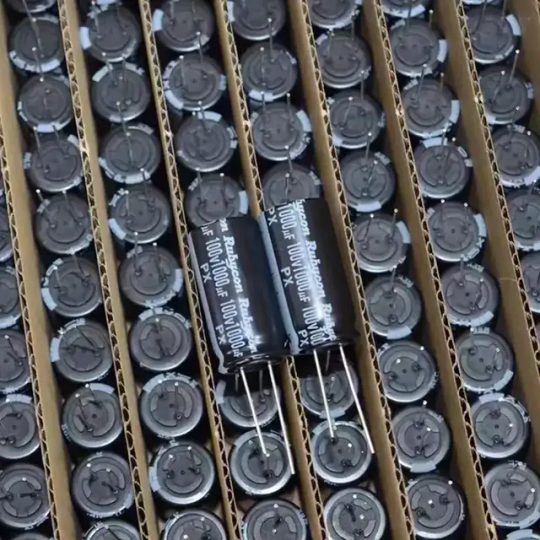
High Quality 1000uf 100v for Rubycon Electrolytic Capacitor Default size:18*36cm.Other specification capacitor are also provided.Talk with us via whatsapp. There is different capacity specification available for the 100V electrolytic capacitor serial: - 100v 1uf - 100v 2.2uf - 100v 4.7uf - 100v 10uf - 100v 33uf - 100v 47uf - 100v 68uf - 100v 100uf - 100v 220uf - 100v 470uf - 100v 1000uf - 100v 2200uf - 100v 3300uf - 100v 4700uf - 100v 6800uf - 100v 15000uf - 100v 22000uf - 100v 33000uf If you have speicified size request,contact us to check. Do you support other specification capacitor? Yes,actually we not only provide differnt specification capacitor but also other electronic components,like IC,Sensor,Microcontroller,Module,Diodes,Transistor,Relay,Connector. If you specified size request,contact us Know more about our company,view here. Read the full article
0 notes
Text
youtube
Tangerine Dream - Rubycon (1975)
0 notes
Text







Spacecraft "Paradoxe"1978 France Private Electronic,Space Rock,Ambient
full spotify
https://open.spotify.com/album/2wWCYWRyTYLVp8e2rZqNfM
Review by oliverstoned Obscure french guitar/synthe duo: John Livengood (Red noise) on synthe and Ivan Coaquette on guitar (Clearlight, Delired cameleon family, Musica electronica viva). They released this unique record in 1978, actually a live album, featuring pieces from 1973, 1975 and the CD version features a 1977 bonus. As the pieces tittles suggests, Spacecraft music is highly cosmic, astral and overall, acid. The first piece sends the listener in the third dimension without preamble. It evokes Gong, Clearlight, thanks to galactic synthe work. The music is not structured, it's purely experimental. The dark mood may also evoke Heldon. Ivan Coaquette guitar interventions are quite rare but qualitative: he has a unique cosmic sound which sounds like no other. The last piece (bonus) "Pays De Glace" is a fascinating experimental hypnotic repetitive tune which is so weird and cerebral that it may be anguishing. The sound quality is average on this record, suffering from a muffled sound. One of the most acid, dark and atypical record from the whole progressive...~ Review by Dobermensch 'Paradoxe' begins off sounding like Steve Hillage's 'Rainbow Dome Music', but quickly devolves into something much stranger. This 1978 oddity by members of the awesome 'non-music' entity 'MEV' is far more electronic and tuneful than the afore mentioned band. Full of fat beefy analogue synths of a proto-industrial persuasion from the late 70's. Mr MEV - Frederic Rzewski uses an amplified glass plate to which he attaches stretched and coiled springs to produce some of the odd sounds present on this 42 minute album. Alvin Curran (MEV) is also on board here, doing strange things like using contact mikes to amplify a large African thumb piano and bits of what can only be described as 'junk'. Third member Richard Teitelbaum plays Moog using - and yes I mean this - his toes, heartbeat and brainwaves. What the??!! There's quite a lot of treated guitar on the second half of the album which is quite nice and there's some superb keyboard reverb weirdness, but needless to say, this won't appeal to many. Fans of 'Atem' to 'Rubycon' by Tangerine Dream and the more experimental listeners of prog may get a lot out of this. There's not much in the way of tunes that you'll be whistling afterwards though, but it's still a pretty good effort....~ Dreamy...~ Line-up / Musicians - Yvan Coaquette / guitar - John Livengood / machines Tracklist Lumière De Lune 3:51 Cosmic Wheel 10:55 Chromatique One's 5:18 Harabizant 9:35 Ananda 2:35 Surface 7:20
Spacecraft "Paradoxe"1978 France Private Electronic,Space Rock,Ambient
full spotify
https://open.spotify.com/album/2wWCYWRyTYLVp8e2rZqNfM
Review by oliverstoned Obscure french guitar/synthe duo: John Livengood (Red noise) on synthe and Ivan Coaquette on guitar (Clearlight, Delired cameleon family, Musica electronica viva). They released this unique record in 1978, actually a live album, featuring pieces from 1973, 1975 and the CD version features a 1977 bonus. As the pieces tittles suggests, Spacecraft music is highly cosmic, astral and overall, acid. The first piece sends the listener in the third dimension without preamble. It evokes Gong, Clearlight, thanks to galactic synthe work. The music is not structured, it's purely experimental. The dark mood may also evoke Heldon. Ivan Coaquette guitar interventions are quite rare but qualitative: he has a unique cosmic sound which sounds like no other. The last piece (bonus) "Pays De Glace" is a fascinating experimental hypnotic repetitive tune which is so weird and cerebral that it may be anguishing. The sound quality is average on this record, suffering from a muffled sound. One of the most acid, dark and atypical record from the whole progressive...~ Review by Dobermensch 'Paradoxe' begins off sounding like Steve Hillage's 'Rainbow Dome Music', but quickly devolves into something much stranger. This 1978 oddity by members of the awesome 'non-music' entity 'MEV' is far more electronic and tuneful than the afore mentioned band. Full of fat beefy analogue synths of a proto-industrial persuasion from the late 70's. Mr MEV - Frederic Rzewski uses an amplified glass plate to which he attaches stretched and coiled springs to produce some of the odd sounds present on this 42 minute album. Alvin Curran (MEV) is also on board here, doing strange things like using contact mikes to amplify a large African thumb piano and bits of what can only be described as 'junk'. Third member Richard Teitelbaum plays Moog using - and yes I mean this - his toes, heartbeat and brainwaves. What the??!! There's quite a lot of treated guitar on the second half of the album which is quite nice and there's some superb keyboard reverb weirdness, but needless to say, this won't appeal to many. Fans of 'Atem' to 'Rubycon' by Tangerine Dream and the more experimental listeners of prog may get a lot out of this. There's not much in the way of tunes that you'll be whistling afterwards though, but it's still a pretty good effort....~ Dreamy...~ Line-up / Musicians - Yvan Coaquette / guitar - John Livengood / machines Tracklist Lumière De Lune 3:51 Cosmic Wheel 10:55 Chromatique One's 5:18 Harabizant 9:35 Ananda 2:35 Surface 7:20
Spacecraft "Paradoxe"1978 France Private Electronic,Space Rock,Ambient
https://johnkatsmc5.blogspot.com/2025/03/spacecraft-paradoxe1978-france-private.html?view=flipcard
https://johnkatsmc5.tumblr.com/post/778635128187617280/spacecraft-paradoxe1978-france-private
0 notes